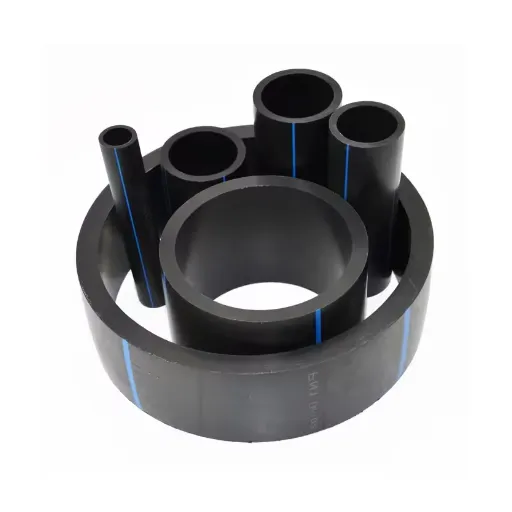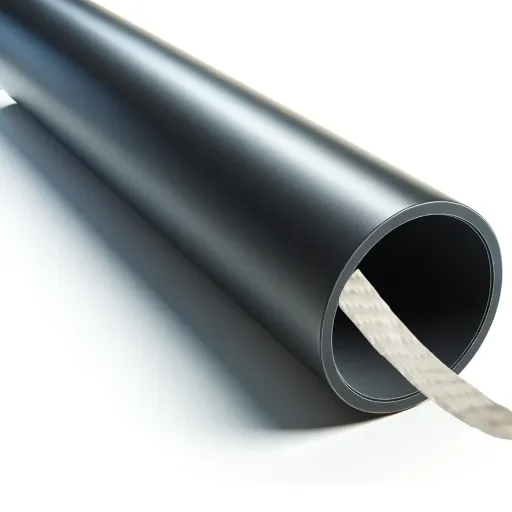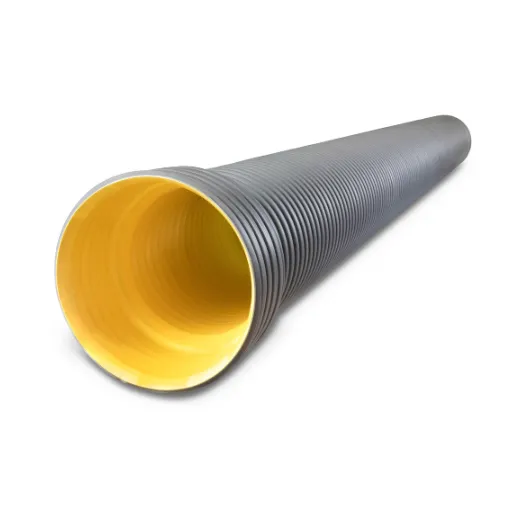High-density polyethylene (HDPE) pipes have become indispensable in modern piping systems due to their exceptional strength, flexibility, and resistance to corrosive environments. However, selecting the right HDPE pipe for a specific application requires a thorough understanding of its thickness, dimensions, and size specifications. Misjudging these factors can lead to inefficiencies, safety risks, or costly replacements. This guide has been meticulously crafted to provide you with an authoritative overview of HDPE pipe standards, ensuring you make well-informed decisions for your projects.
What are the standard HDPE pipe sizes and dimensions available?
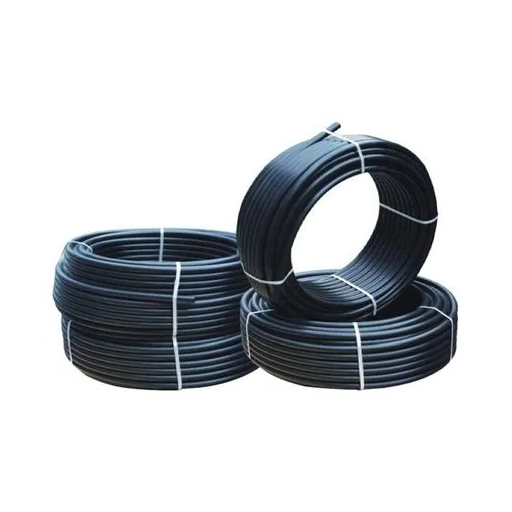
Understanding HDPE pipe size charts and measurement systems
HDPE pipes are categorized based on several relevant criteria that determine their appropriateness for certain use cases. The most prominent standards used for classification include the diameter, wall thickness, and pressure rating.
- Outer Diameter: An essential factor used for the classification of HDPE pipes is the outer diameter. It is usually given in inches or millimeters. It starts from as little as ¾ inch pipes utilized in domestic plumbing, scaling up to over 63-inch pipes utilized for industrial and municipal purposes.
- Wall thickness and standard dimension ratios (SDR): SDR describes the ratio between the diameter of a pipe to its wall thickness. This is an important classification when defining pressure ratings for a pipe. Common SDR classifications are SDR 11, SDR 17, SDR 21. Lower SDR values are more preferable due to thicker walls and higher pressure resistance.
- Pressure Ratings (PN): A pipe’s tolerable maximum pressure, also known as taper nominal pressure (PN). It is expressed in bars or pounds per square inch (psi). Ensuring that the proper PN rating is set for a pipe is critical to enhancing the operational longevity of the pipe.
- Length requirements: Traditionally, HDPE pipes are produced in straight lengths or in continuous coils. Coils are practical for smaller diameter pipes (up to 6 inches OD), while greater sized pipes are usually in straight lengths.
With the help of these standardized metrics, engineers and project managers can accurately opt for the pipe size while factoring all other considerations like performance hydraulics, soil load, and type of fluid. This guarantees that the required or chosen HDPE pipe is not only compliant with the project requirements but also with general requirements, hence reducing project execution failure.
Common IPS and DIPS sizing systems for HDPE pipes
The two primary size classification systems for HDPE pipes are the Iron Pipe Size (IPS) and Ductile Iron Pipe Size (DIPS) standards. These classifications set the nominal pipe size (NPS) and outside diameter (OD) of pipes concerning various applications, which is crucial for selecting a pipe appropriate for the intended use.
- IPS Pipes: Industries use the IPS sizing standard because of its adoption with existing steel piping systems. Pipes sized under this standard possess an outer diameter that matches exactly with the nominal pipe sizes calibrated for use with iron or steel pipes. This guarantees that there is no forging of gaps in HDPE pipes that are placed instead of, or interfaced with, metal systems.
- DIPS Pipes: On the other hand, DIPS sizing system is compatible with the specifications of ductile iron pipes which have slightly bigger outer diameters than IPS pipes of the same nominal size. This standard is particular in use in water distribution systems and in other civil engineering works dealing with municipal grade pipelining.
Comprehending these sizing systems is crucial for the proper design of pipelines since it affects not only the piping but also the fittings, flanges, and other components. To configure a system properly, it is necessary to examine the hydraulic performance differences of IPS and DIPS pipes with the same pressure rating and flow conditions. Each selection helps enhance operational efficiency and increase system longevity.
What factors determine the required wall thickness for HDPE pipe?

Pressure requirements and their impact on HDPE pipe wall thickness
The thickness of HDPE pipes is usually defined by the pressure class of the pipe, which refers to the value of the maximum internal pressure a pipe can endure during its lifespan. This relationship can be captured using the Standard Dimension Ratio (SDR), which is defined as the ratio of a pipe’s outer diameter to its wall thickness. Pipes with lower SDR have thicker walls and are capable of withstanding higher pressures.
The wall thickness of the pipe is primarily affected by the system oscillating operating pressure, surge pressures caused by transient flow events, and the grade of the material used for the pipe. For example, PE4710 materials are stronger and more durable than older grades of materials, thus allowing for thinner walls at a given pressure rating. Moreover, designers also have to accommodate other factors like variability in installation conditions, long-term creep, and cyclic loading stresses, which also require adding some factors of safety.
For pipes exposed to dynamic pressure fluctuations or in cases where there is a risk of high surge pressure, it may be necessary to use thicker-walled pipes to prevent deformation, cracking, or failure over time. Guaranteeing the correct wall thickness not only reduces the risk of failure but enhances the overall performance and lifecycle cost of the system.
Environmental considerations for selecting appropriate wall thickness
When determining the appropriate wall thickness of piping systems, these constituents have an undeniable impact on their long-term performance and sustainability. Externally applied loading, soil conditions, and chemical exposure, coupled with temperature changes, are critical factors that affect wall thickness and material selection. For example, extreme temperature regions may need significantly thicker pipes to accommodate the structural damages resulting from thermal expansion and contraction cycles throughout their lifespan.
Alongside the previously mentioned soil constituents, the pH level, moisture content, and corrosive potential also need thorough examination. Acidic or corrosive environments may need supplementary protection, such as increased wall thickness, special coatings, or layer systems, to mitigate material dissolution. Furthermore, such areas that endure high tensile and compressive stress from vehicular or industrial use require specially designed pipe systems with increased wall thickness to prevent structural deformation.
Choosing the optimal wall thickness considering environmental impacts guarantees operational efficiency while extending the lifespan of the system, reducing its environmental footprint. This, in turn, minimizes the need for repairs or replacements, as these preemptive measures enhance the system’s lifespan.
Application-specific requirements for water, gas, and wastewater systems
Selecting the design and materials for water, gas, and wastewater systems must meet strict technical and legal requirements to achieve maximum efficiency and safety within dramatically changing operating conditions. In terms of water systems, the most important factors are its resistance to corrosion, the ability to endure varying levels of pressure, and compliance to potable’s standards. Materials such as PVC, HDPE, or ductile iron need to be considered regarding their range of flow, chemicals, and the surroundings of the installation.
Gas distribution systems require various other materials that are able to withstand and endure high pressure, contain gas permeation, and with extreme temperatures. More commonly known materials such as polyethylene (PE) pipes tend to undergo the most rigorous testing for tensile and thermal strength, as well as stability. Other factors like joint stability and gas leakage detection technology boost operational safety for gas uses.
The diverse warm water corrosive factors, abrasive solids, and other contents waste water systems have to deal with makes these systems an unprecedented engineering challenge. System materials must be built from CPVC, cast iron or reinforced concrete, to strengthen frameworks along with coatings to protect from chemical damage.
Besides ensuring a safe environment and meeting safety requirements, modern monitoring and advanced maintenance frameworks across all applications have greatly decreased failure hazards.
How do I select the right HDPE pipe thickness for my specific application?
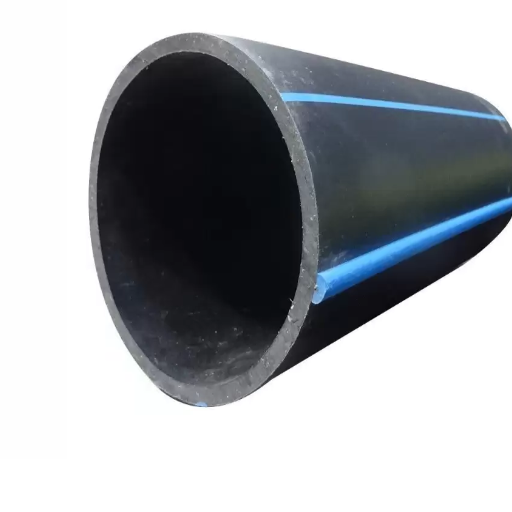
Matching HDPE pipe specifications to water supply and distribution needs
Selecting normal and axial HDPE pipe thicknesses for the water supply and distribution systems requires careful consideration of a multitude of additional factors to achieve optimal efficiency under precise conditions. A pipe’s Pressure Rating (PR) or Pressure Class (PC) remains one of the most fundamental aspects, most of the time settled by checking the operating pressure of the system, peak pressure surges, and the pipe’s long-term Hydrostatic Design Basis (HDB), which is commonly accepted. Other classifications include Standard Dimension ratio (SDR) ratings such as SDR 11, SDR 17, or SDR 21, where smaller SDR numbers indicate greater thickness and, thus, an increase in pressure bearing capability.
Furthermore, a material’s mechanical properties are greatly influenced by temperature. Although HDPE retains its strength and flexibility throughout a wide range of temperatures, increased temperatures may cause more pressure-induced damage. These considerations need to be made by the engineers when determining pipe thickness due to warm climates and heated water systems.
Hydraulic efficiency is quintessential as the flow capacity is directly proportional to the flow rate, which is affected by the inner pipe diameter. HDPE’s lower density translates to a smoother and larger internal diameter, which reduces frictional losses and thus increases flow. Transporting water over considerable distances or in high-demand areas often requires careful consideration of hydraulic grade lines to ensure appropriate matching of pipe specifications with performance requirements.
Regarding distribution systems located in more environmentally sensitive or high-risk areas, additional factors such as safety against external load deformation, UV exposure, and chemical corrosion susceptibility must be considered. A comprehensive approach to selecting HDPE pipes comes from merging this analysis with local laws and the socio-economic aspects of the particular project.
Selecting appropriate thickness for high-pressure and oil and gas gathering
When calculating the thickness of high-pressure pipelines and oil and gas gathering systems, multiple factors must be considered to achieve the desired operational efficiency and compliance with industry standards. The foremost factors are internal pressure, external ambient conditions, cyclic temperature changes, and the chemical nature of the medium being transported.
For high-pressure pipelines, wall thickness is calculated using industry-standard equations, like Barlow’s equation, which determines minimum required thickness in relation to internal pressure, pipe diameter, material strength, and safety margins.
For oil and gas gathering systems, other factors include flow rates, abrasion from the particulates being transported, and the possible presence of sour gas (H2S), which may increase the likelihood of corrosive damage. Such conditions could apply restrictions on the use of more advanced X-series steel grades or corrosion-resistant alloys. Practical work employs Computational Fluid Dynamics (CFD) and Finite Element Analysis (FEA) for the assessment of stress distributions along the pipeline walls for its design optimization.
In conclusion, the balance between mechanical requirements, economical considerations, and maintenance forecasting should be integrated into the selection process. Consulting with the engineers and material specialists guarantees that the pipeline design optimally complies with relevant safety and operation guidelines while maintaining minimum costs throughout the system’s life cycle.
Wall thickness considerations for various industries and flow capacity requirements
In the oil and gas sector, the pipelines incur high-pressure and corrosive material transport, which means walls must be thicker and fabricated of advanced alloys or carbon steel for leak proofing and durability. However, in the chemical processing industry, compounds transported may include reactants of extreme temperature changes, requiring meticulous calculation for material selection with thick walls to prevent chemical thawing and consider thermal stresses and compatibility.
Also, flow capacity is crucial since the rate of flow needs to be minimized due to increased pressure forming internally alongside erosion concerns. In severe value transport requiring municipal water service, high volume spending, or large-scale agricultural irrigation systems, structural integrity and buoyancy need to be controlled when the flow optimally engages.
The use of advanced computing techniques, such as fluid dynamics simulation and finite element analysis (FEA), is critical in assessing the stress concentration along the walls of the pipeline at different operating conditions. With these technologies, precision objectives are achieved, resulting in tailored designs of pipes which meet both industrial and financial needs.
What are the industry standards and specifications for HDPE pipe thickness?
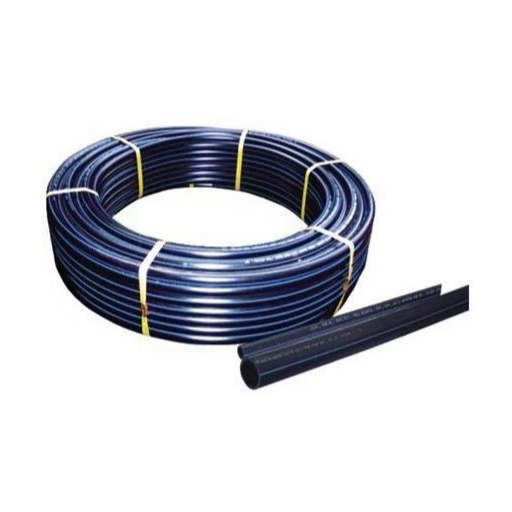
Minimum wall thickness requirements for different applications
The minimum wall thickness criteria for High-Density Polyethylene (HDPE) pipes is derived from operating pressure, pipe diameter, and other specific requirements relevant to its use. These considerations are intended to maintain the adequacy of the structure, long service life, and conformity to industry standards.
In the case of drinking water transport, the minimum wall thickness is defined by the pipe’s Pressure Rating (PN), which is frequently determined by the Standard Dimension Ratio (SDR) formula. For instance, an HDPE pipe with SDR of 11 has a higher pressure rating, while an SDR 17 pipe has a lower rating since it is thinner-walled compared to its diameter.
Gas distribution systems entail significant considerations for the hazardous substances being transported. PE 80 and PE 100 grades designated for these systems follow specific regulations that restrict wall thickness to allow greater operating safety margins that add to the maximum allowable working pressures.
Moreover, selecting the minimum wall thickness impacts the control of aging due to temperature variations and UV radiation. Using these standards enables engineers to configure pipe sizes that provide maximum performance under given operational conditions.
Compatibility issues between different HDPE piping solutions
The primary compatibility problems with various HDPE piping solutions stem from varying material grades, jointing systems, and manufacturing specifications. High-density polyethylene (HDPE) pipes are manufactured in different grades, each possessing different mechanical features, such as tensile strength and stress crack resistance. Using pipes of differing grades together can lead to a lack of system reliability for the given performance level due to unreliable performance under pressure or environmental conditions.
One of the other important aspects is the jointing technique. HDPE pipes may use fusion methods such as butt fusion or electofusion and mechanical joints. Jointing system incompatibility could lead to structural elements being leaky or weak within the structure if the systems are not meant to snap-fit together. For instance, less favourable heat alignment settings can result in unsufficient bonds that won’t hold up to bending stresses.
It is essential complete and thorough assessments of compatibility at the designing and purchasing stages in order to solve particular problems.The care guarantees no malfunctions occur and guarantees the system works efficiently for a long period of time.
How does the HDPE pipe wall thickness compare to other pipe materials?
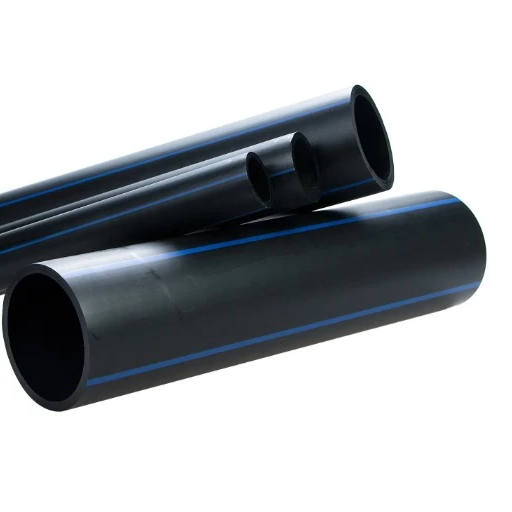
Comparing HDPE pipe dimensions to ductile iron pipe sizes
Analyzing HDPE (High-Density Polyethylene) pipes against the ductile iron pipe (DIP) sizes shows distinct differences in design standards, as well as wall thicknesses. SDR determines a pipe’s outer diameter about its wall thickness and indicates stronger walls with lower SDR values. On the other hand, ductile iron pipes follow as well unit wall standard that outlines the wall thicknesses relevant to nominal pipe sizes and pressure class ratings.
An example of this is an 8-inch ductile iron pipe having a wall thickness of 0.33 inches under a Pressure Class 350 designation. This also goes for an 8-inch HDPE pipe with an SDR (11) as it adopts similar characteristics with more than twice the wall thickness of 0.727 inches. The reason for the thicker walls in ductile iron is due to the lower compensating modulus of elasticity of HDPE compared to the rigid, inherently stronger ductile iron material.
The difference in the thickness of the walls of both materials alters the capacity of the hydraulic systems. Pipes made from HDPE may be lightweight and flexible, but their thicker walls result in a smaller internal diameter, restricting flow rate compared to ductile iron pipes, which maximize flow efficiency due to comparatively thinner walls. Ductile iron pipes also can smooth cement mortar lining, which aids in achieving higher operating pressure while maximizing flow.
In the end, the most appropriate pipes for the project depends on other project specifics like pressure limits, the situaton of the installation, preject budget, and the expected durability of the pipes over time. Spending time on a detailed analysis of the project will guarantee selection of the most suitable pipes.
Benefits of thicker walls in HDPE pipes for water and wastewater systems
Enhanced structural HDPE (High-Density Polyethylene) pipes have thicker walls, improving their ability to endure higher internal and external pressures. This trait is especially important in the case of water and wastewater systems, where dependability is of utmost importance. As expected, thicker-walled HDPE pipes have a higher pressure rating (PN rating) and are, therefore, useful for high-pressure applications. Moreover, increased wall thickness improves resistance to stress cracking and deformation under load, which guarantees adequate performance in challenging environments such as trenchless installations or areas prone to heavy traffic loads while above ground.
Thicker walls deal more effectively with the increased incidents of abrasion and impact during installation or carrying the pipes, thus improving the overall durability of the pipes. This is especially important in the case of wastewater applications where debris and other abrasive materials can erode thinner walls over time. Moreover, the ability to withstand slow crack growth of thicker-walled HDPE pipes reduces the probabilities of catastrophic failures even after years of use.
In addition to providing mechanical performance, the thicker walls serve as additional protection from external phenomena, for example, ultraviolet (UV) radiation in above-ground installation, further enhancing the piping system’s longevity. Although higher material investment and cost might be prevalent when considering thicker-walled HDPE pipes, their reliability, along with greater service life, outweighs the initial investment, which makes them economically advantageous for infrastructure development needing stronger durable materials.
Wall thickness considerations when transitioning between different pipe materials
During the succession of pipes to other materials such as plastic or metal pipes, wall thickness should be examined carefully to avoid compromise factors such as integrity, compatibility, or system integration. Each of these materials contains differing physical attributes. They range from strength, operational temperature expansion, and pressure thresholds, which all affect wall thickness requirements. For example, PVC pipes do allow for greater strength-to-weight ratios and there, ore use thinner walls, whereas HDPE pipes have lower tensile strength than metal pipes; hence, wider walls are used.
Smooth integration is only achieved when wall thickness tolerance is fitted without burdensome weakening or flow obstructions. All joints and internal diameters require special attention as dimension disparity increases turbulence, lowering flow efficiency or stress focus at transition points. They can create dire results. Mismatched dimensions at joint junctures may lead to stress concentrations at transition points. Furthermore, in between materials that are interconnected, the pressure rating should align. The most demanding pressure within the pipeline segment should be sustained by the selected transition outline in respect to the highest pressure requirement.
With these tools, engineers are able to optimize design to avoid expensive failures or wear without losing cost effectiveness. Reliability and performance consistency over the lifetime of the pipeline is ensured through proper design consideration regarding wall thickness and intermaterial interactions.
References
Frequently Asked Questions (FAQs)
Q: What is the standard dimension ratio (SDR), and how does it affect HDPE pipe selection?
A: Standard dimension ratio (SDR) is the ratio of the pipe’s outside diameter to its wall thickness. It’s a critical factor in HDPE pipe selection as it directly determines pressure capacity and strength. Lower SDR values indicate thicker walls of the pipe, providing higher pressure ratings. For example, SDR 11 pipes can handle more pressure than SDR 17 pipes of the same diameter. When selecting the right pipe, you need to consider your system’s pressure requirements as well as environmental factors that might impact performance. HDPE pipe meets various industry standards, like ASTM specifications, ensuring optimal performance and longevity for applications ranging from potable water services to natural gas distribution.
Q: How does the inside diameter of HDPE pipes affect flow capacity and system performance?
A: The inside diameter of HDPE pipes directly impacts flow capacity and overall system performance. A larger inside diameter allows for greater volume flow rates and lower friction losses, resulting in more efficient transport of fluids or gases. When wall thickness increases (lower SDR), the inside diameter decreases for the same outside diameter pipe, reducing flow capacity. This relationship is critical when designing systems for water applications, slurry transport, or natural gas distribution. The smooth interior surface of high-density polyethylene pipe contributes to excellent hydraulic properties, minimizing turbulence and ensuring smooth flow even in challenging conditions. Engineers must balance pressure requirements (dictating wall thickness) against flow requirements (favoring larger inside diameters) when designing systems for optimal performance.
Q: What are the common dimension ratio options for HDPE pipes and their appropriate applications?
A: Common dimension ratio options for HDPE pipes include SDR 7, 9, 11, 13.5, 17, 21, 26, and 32.5. SDR 11 is predominantly used in conduit applications, natural gas distribution, and moderate-pressure water systems. SDR 17 is suitable for lower-pressure water and waste applications, while SDR 7 and 9 are used for high-pressure applications like industrial fluid transport. The dimension ratio directly correlates to pressure capability – pipes with lower SDR numbers have thicker walls and can withstand higher pressures. When selecting a dimension ratio, engineers consider not just pressure requirements but also installation methods, soil conditions, temperature variations, and chemical compatibility. For potable water services, both the dimension ratio and material grade must meet specific regulatory standards to ensure safety and durability.
Q: How do pressure ratings vary based on pipe diameter and SDR for HDPE pipes?
A: Pressure ratings for HDPE pipes decrease as diameter increases and increase as SDR decreases (thicker walls). For example, an SDR 11 pipe with a 2-inch diameter might have a pressure rating of 160 PSI, while the same SDR pipe with an 8-inch diameter might be rated for only 125 PSI. This relationship exists because, at the same pressure, larger pipes experience greater total force on their walls. Temperature also affects pressure ratings – HDPE pipes are typically rated at 73°F (23°C), with derating factors applied for higher temperatures. Material grade also impacts pressure capacity, with PE4710 offering higher pressure ratings than PE3608 at the same dimensions. Engineers must consider these factors when designing systems for water applications or natural gas distribution to ensure the pipes can handle both normal operating pressures and occasional pressure surges.
Q: How do environmental factors influence the selection of HDPE pipe thickness and diameter?
A: Environmental factors significantly impact HDPE pipe thickness and diameter selection for optimal performance and longevity. In regions with extreme temperature variations, thicker-walled pipes (lower SDR) may be necessary as HDPE’s strength decreases at higher temperatures. For buried applications, soil conditions determine required pipe stiffness – rocky or shallow installations might necessitate thicker-walled pipes to resist point loading and deflection. UV exposure is another consideration for above-ground installations, potentially requiring UV-stabilized material or protective coverings. For chemical transport or contaminated soils, material compatibility must be verified. In water and waste applications with potential for water hammer, additional pressure tolerance may be needed. Applications in freezing environments benefit from HDPE’s flexibility to accommodate expansion. Engineers must consider these factors alongside basic hydraulic requirements when specifying pipe dimensions for challenging conditions.
Q: What specifications govern HDPE pipe dimensions for natural gas distribution systems?
A: HDPE pipe dimensions for natural gas distribution systems are primarily governed by ASTM D2513 (Standard Specification for Polyethylene Gas Pressure Pipe, Tubing, and Fittings) and ASTM F2619 (Standard Specification for High-Density Polyethylene Line Pipe). These standards specify precise outside-diameter measurements, allowable tolerances, and wall-thickness requirements based on SDR values. For natural gas applications, SDR 11 pipes are commonly used, though SDR 9 might be selected for higher pressure systems. The dimensions must enable the pipe to handle the system’s maximum operating pressure with an appropriate safety factor. Additionally, regulatory bodies like the Department of Transportation’s Pipeline and Hazardous Materials Safety Administration (PHMSA) enforce these standards to ensure public safety. The pipe dimensions must be certified for gas service, with traceability and quality assurance programs in place to verify that the high-density polyethylene material and dimensions consistently meet the rigorous specifications required for safe gas transport.
Q: What factors determine HDPE pipe thickness and standard dimension ratio (SDR)?
A: HDPE pipe thickness is primarily determined by the Standard Dimension Ratio (SDR), which is the ratio of the pipe’s outside diameter to its wall thickness. The SDR directly influences the pipe’s pressure capacity and structural integrity. Pipes with lower SDR values have thicker walls relative to their diameter, making them suitable for high-pressure applications. Factors influencing thickness requirements include operating pressure, temperature, environmental factors, and the specific application. ASTM and other international standards provide specifications for various SDR ratings to ensure optimal performance and longevity in applications ranging from potable water services to natural gas distribution.
Q: How does the outside diameter (OD) of HDPE pipe differ between various sizing systems?
A: The outside diameter (OD) of HDPE pipe varies between different sizing systems. In IPS (Iron Pipe Size) pipe, the OD is slightly larger than the nominal size. For example, a 2-inch IPS HDPE pipe has an actual OD of approximately 2.375 inches. In contrast, DIPS (Ductile Iron Pipe Size) has larger outside diameters for the same nominal sizes. ISO and metric systems specify OD directly in millimeters. It’s crucial to know which sizing system you’re working with when selecting the right pipe for your project, as mixing systems can lead to connection issues. HDPE pipes are classified by their OD, which remains consistent within each sizing system, while the inside diameter varies based on wall thickness.




